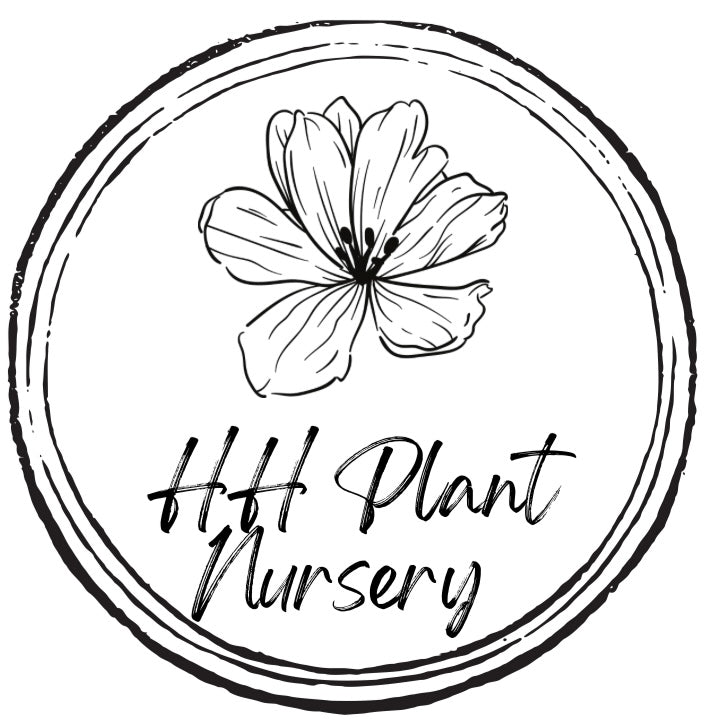Healthy Harvesters
Turmeric, Curcuma longa ROOTED Plant
Turmeric, Curcuma longa ROOTED Plant
Couldn't load pickup availability
You will receive 1 WELL ROOTED Turmeric Plant.
Your plant will be shipped with the roots wrapped in damp paper towels and with plastic and ready to plant upon arrival. The plant will be between 4” to 5” in height with well-developed roots. Planting guidelines will also be included.
Turmeric Plant is a perennial herb that re-shoots every spring. The scientific name of turmeric plant is Curcuma domestica syn. Curcuma longa with family ingiberaceae, the ginger family. The popular varieties of turmeric plant are Curcuma longa, Curcuma zedoaria and Curcuma aromatica. Turmeric is known by different names in different countries.
Some of the turmeric names are Turmeric Root, Curcumin, Curcumine, Curcuminoïde, Curcuminoid, Curcuminoids, hidden ginger, Queen lily, Indian saffron, ukon, Yu Jin, nghe, wong-keong, Rhizoma Cucurmae Longae, Curcuma, Curcuma aromatica, Curcuma domestica, Curcumae longa, Curcumae Longae (Latin name), Curcumae Longae Rhizoma, terre merite in French and Haldi, Halada, Haridra, Indian Saffron, Nisha, Rajani, Pian Jiang Huang, Racine de Curcuma, Radix Curcumae, Safran Bourbon,
The turmeric plants have very attractive large leaves which will give your garden a lush tropical look (see the picture of turmeric plant below.). You can use fresh turmeric root or turmeric powder in vegetable curries and also in many natural beauty recipes.
Growing turmeric organically in pots at home garden is not difficult using a turmeric root if you follow the step-by-step tips and turmeric growing information given below.
Turmeric Plant Description
The turmeric plants grow 70-90 cm high and will slowly spread to form large clumps with underground rhizomes. The plants have broad green tropical-style leaves providing a beautiful view throughout the summer growing season. The turmeric plant produces very beautiful and attractive white flowers (see the photo of turmeric flower).
The eating part of the plant is roots or rhizomes. In India, the Haldi roots are cooked and eaten as vegetable curry with roti or bread. In Indonesia, the young shoots and rhizomes are eaten raw.
Growing Turmeric in Containers or Garden Beds
Turmeric can be grown both in garden beds or in wide containers with similar yield. Only requirement is that the soil should not be water retaining, as water-logging will rot the rhizomes, reducing the yield.
I planted 4 turmeric rhizomes in a pot of size 75 cm long, 30 cm wide and 30 cm deep 2 years ago. The turmeric plants produced more than 5 kg of fresh turmeric in 2 years, and the plants are still going on for the new crop.
The advantages of growing turmeric plant in containers is that the plant can be moved in sun; and also indoors if there is snow or frost.
Another advantage of growing turmeric in pots is that you can grow turmeric if you live in an apartment and you don't have a garden bed. In India and elsewhere, grow your own organic turmeric in pots in balconies, verandas, terraces, backyards, front yards, and similar places.
Turmeric Growing Zones
Turmeric is a tropical summer plant, needing heat and moisture, temperatures between 20 and 30 °C (68–86 °F). The plant will die in the winter. The plant can grow anywhere in summer. It can grow in USDA Zones 7b - 10b. The plants can not tolerate climate colder than 18°C. As a matter of fact, turmeric can grow in any zones if the roots do not freeze like south Florida where it can grow outside even in winter. In Australia, turmeric plant can be grown in Sydney and other cities in summer.
When To Plant Turmeric
In tropic regions, turmeric can be planted any time, but elsewhere plant it in spring to summer. I found that turmeric roots sprout well when the soil becomes warm.
Where To Plant Turmeric
Turmeric thrives best in direct or indirect sun, but it can also grow in light shade. However, heavy shade for prolong time will reduce the yield. Also if grown in in full sun, keep the soil wet at all the time.




